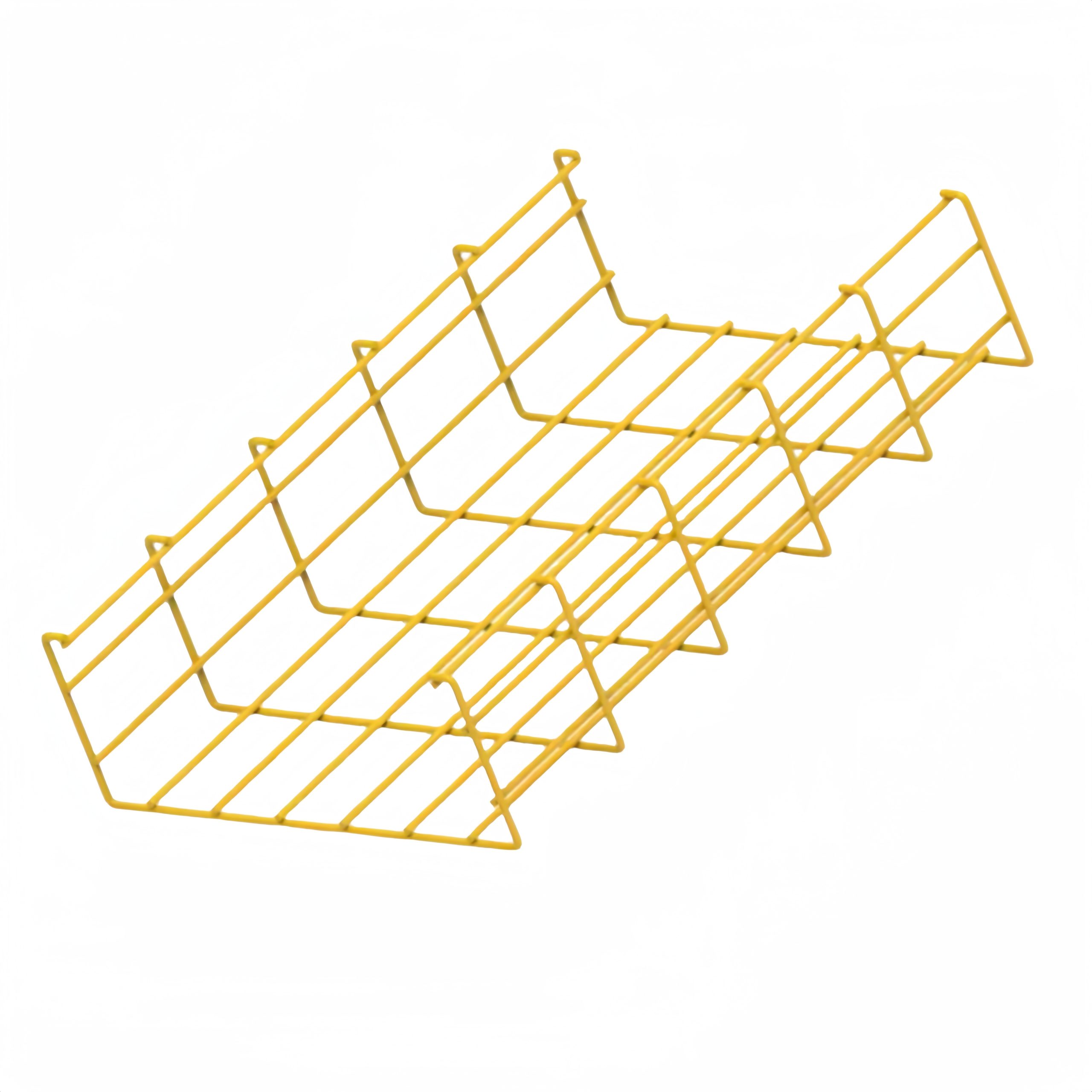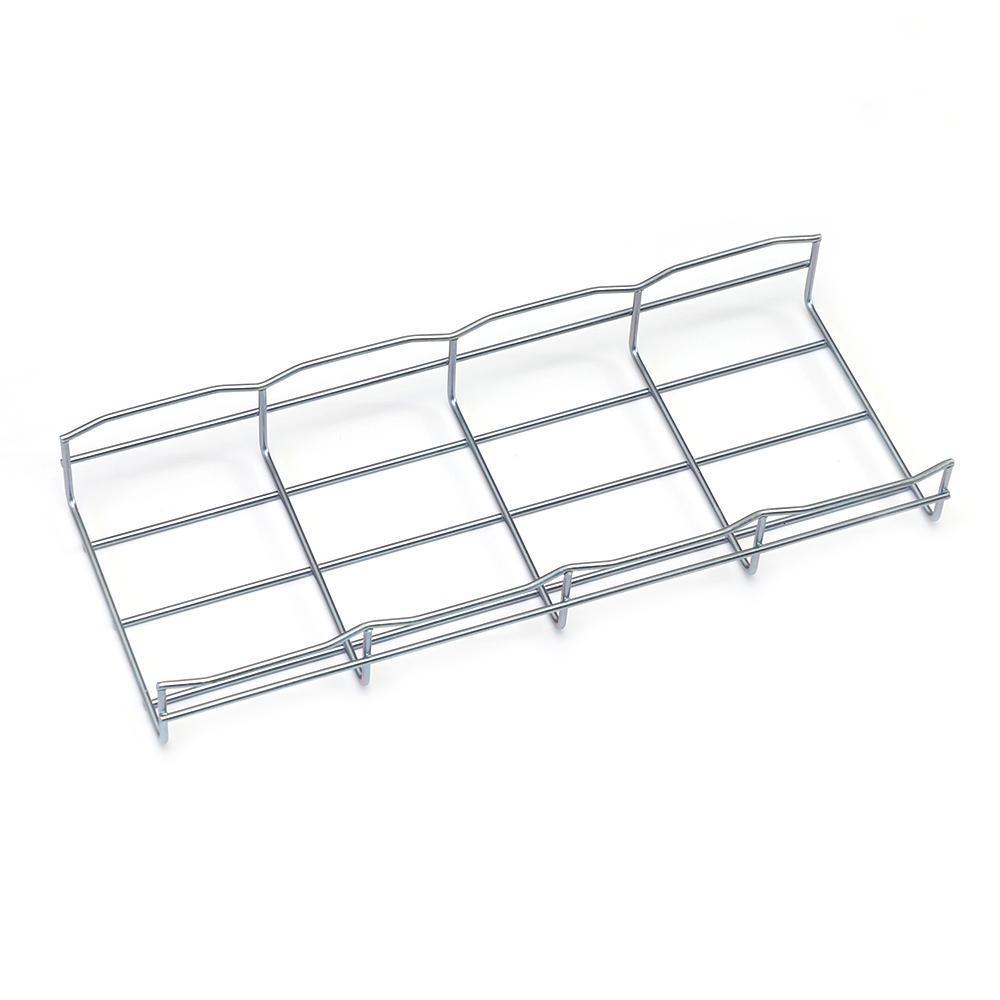Cable trays are essential components in modern electrical installations, serving as an organized and secure pathway for cables and wires. They help maintain system integrity, simplify maintenance, and promote safety by providing a structured support system for power and communication cables. Two popular types of cable trays are wire mesh cable trays and perforated cable trays, each with their unique features and advantages. This article delves into the differences between these two systems to help you make an informed decision based on your project’s requirements.

1. Construction and Design
Wire mesh cable trays are fabricated from welded or woven steel wires, forming a grid-like structure. The openness of the design allows for excellent ventilation and heat dissipation, which is particularly beneficial for high-temperature environments or where cables generate significant heat. The robust construction provides ample strength and rigidity while allowing for easy visual inspection of the cables within. The gaps in the wire mesh allow for free air circulation, reducing the risk of overheating and prolonging cable life. Furthermore, wire mesh cable trays can accommodate large and odd-shaped cables due to their flexible design.
Perforated Cable Trays:
Perforated cable trays, on the other hand, are typically made from sheet metal that has been punched with a series of uniform holes, creating a flat surface with open areas. These trays provide a more solid base for cables compared to wire mesh, offering greater protection against physical damage and environmental factors such as dust and moisture. The holes permit some level of airflow but not as efficiently as wire mesh trays. However, they still offer good cable support and organization. Perforated cable trays are often preferred when aesthetics or a cleaner appearance is desired, as they present a smoother finish.
2. Cable Support and Load Capacity
Wire Mesh Cable Trays:
The open design of wire mesh cable trays offers a versatile support system that evenly distributes weight across the entire tray surface. Cables can be easily secured using tie-wraps or clips through the mesh openings, providing excellent load-bearing capacity and preventing slippage. Their inherent flexibility also makes them suitable for longer spans without additional support structures.
Perforated Cable Trays:
Perforated cable trays provide a solid surface for cables to rest on, which can be advantageous for heavier loads or for cables that require more stability. The holes allow for ties or straps to secure cables, although the method may differ slightly from wire mesh trays. Depending on the gauge and construction, perforated trays can carry substantial loads and provide firm support for various cable configurations.
3. Cable Protection and Fire Resistance
Wire Mesh Cable Trays:
While wire mesh trays excel in ventilation and heat dissipation, they do not inherently provide insulation against fire or chemicals. For applications where enhanced fire protection is necessary, special coatings or materials can be used to increase their fire resistance.
Perforated Cable Trays:
Perforated trays can offer better protection against environmental elements and may have a higher fire resistance depending on the material used. The solid surface can potentially reduce the spread of flames and protect cables from dripping liquids or falling debris. Additionally, perforated trays can be powder-coated or treated to enhance their fire retardant properties.

4. Installation and Maintenance
Wire Mesh Cable Trays:
Installation of wire mesh cable trays is relatively straightforward due to their lightweight and flexible nature. Their open design facilitates easy access for adding, removing, or reconfiguring cables, making maintenance a simpler task.
Perforated Cable Trays:
Perforated cable trays also offer ease of installation and maintenance, albeit with a slightly different approach. Their solid surface can make it easier to lay out cables neatly and uniformly. While the access for modification might be somewhat restricted compared to wire mesh trays, perforated trays can be designed with removable covers or hinged lids for convenient maintenance.
Conclusion
In summary, the choice between wire mesh and perforated cable trays depends largely on the specific needs of the application. Wire mesh trays excel in providing superior ventilation and versatility, whereas perforated trays offer better protection and a neater appearance. Both types are effective at supporting and managing cables but cater to different priorities in terms of heat management, cable protection, and aesthetic preferences. Careful consideration of these factors will ensure the selection of the most appropriate cable tray system for any given project.
